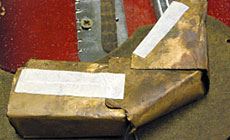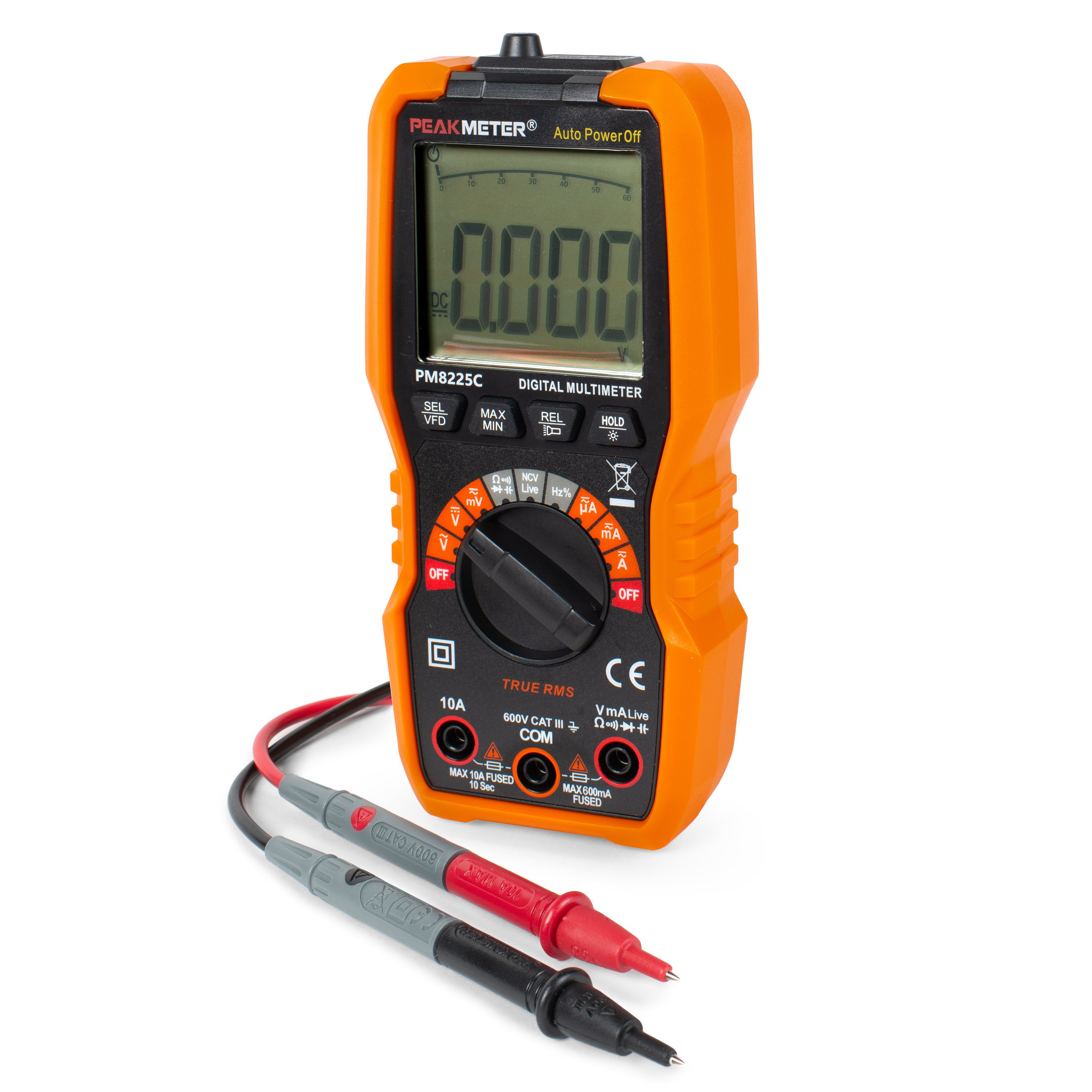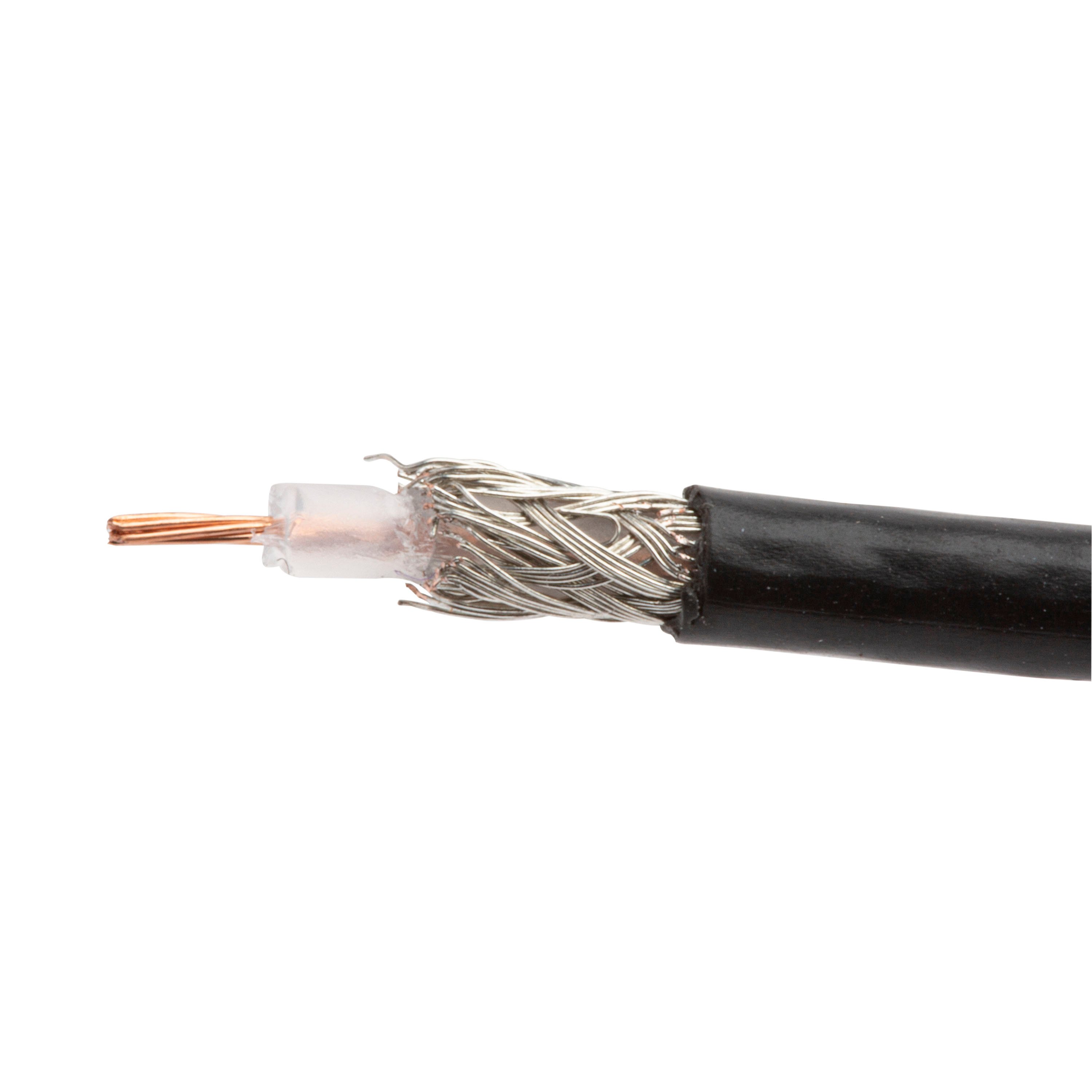Single-coil buzzkill: the why and how of electric guitar shielding.
Bright lights, big trouble

Buzzkill for single-coils: Electrical shielding tips
Single-coil pickups are noisy by nature.
They’re sensitive to electromagnetic interference radiated by lights, TVs and appliances. The magnetic coil is an antenna, and it picks up 60 cycle hum. It gets worse on stage, with your guitar picking up neon bar signs, fluorescent lights and the beer cooler kicking on and off throughout your set. At high volumes it gets worse, compounded by the high gain settings on your amp.
The answer is shielding.
Here’s how to block those signals out with copper foil and shielding paint.
We offer shielding paint, a shielding kit, and rolls of copper tape in three widths. The kit contains a variety of copper tape plus shielded and insulated wire. I use the kit, supplemented by the 2” roll of tape which can be cut down to any size needed. You don’t need many tools: I use a good pair of scissors, an X-Acto knife, and a multimeter to test for continuity.
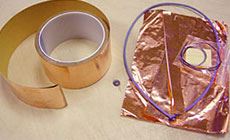
Start by cleaning the control cavity. Get rid of any sawdust, buffing compound or other debris. Use the 5” x 7” copper sheet from the shielding kit, trimming it to fit the bottom of the cavity. Cut the foil slightly oversize so it laps up onto the side walls.
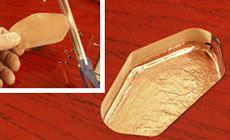
Trim your tape so it overlaps the pieces already installed in the bottom of the cavities to ensure continuity. Make sure you also let the foil overlap the top slightly so it makes good contact with the pickguard (as well as the bridge and control cover in the case of this custom Tele) once it’s shielded.Then use your X-Acto handle to smooth out the foil.
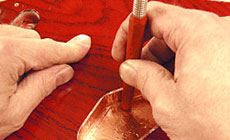
After shielding all of the cavities, you’ll have something that looks like this. Notice that all the shielding extends out of the cavity a little, creating a lip on the top. This lip makes contact with the shielded pickguard and control cavity cover when they’re screwed in place.

Now for the pickguard
Make sure the back of the guard is clear of anything that could keep the adhesive copper from sticking. Use the 2” roll to shield the pickguard, making sure the pieces overlap for electrical contact. With your X-Acto knife, work slowly and carefully to trim away any excess and cut out the pickup holes.

Shielding the entire pickguard this way reduces the annoying static some players get when they touch their pickguards.
TIP!
Use an old credit card as a squeegee to smooth out the foil.

Check It Out!
Vintage vibe without breaking the bank!

StewMac Single-coils sound great! They’re made like the most sought-after classic pickups: individually wound with original-style AWG42 coil wire around Alnico 5 magnets, and wax-potted.
This Tele has channels drilled between the pickup and control cavities that I can’t reach, so instead I’m wrapping the pickup leads that run through them. After wrapping the wires, I’ll add a few short pieces of heat-shrink tubing just to help hold it all together.

The wrapped leads make contact with the shielding in the neck pickup and control cavities to complete the shield. I’ll also do this to the bridge pickup. Throughout the job, I’ll frequently use my multimeter to check for continuity along the way.

Most output jack cavities are tight, so I don’t shield them; it’s too easy for the jack to short out against the shielding. Instead, I use the shielded 2-conductor wire included with the shielding kit.

With all the electronics encased, we’re ready for a final test before firing it up... Yep, we have continuity throughout the entire circuit. This guitar is totally shielded.
Rather than shield the entire guitar some folks prefer to shield the coil itself using copper tape. The shield is then connected to ground. This isn’t as effective as shielding the whole thing, but it definitely does help. (This mod is not recommended for rare or vintage pickups!)

In tight or odd shaped cavities, conductive paint may be easier to apply. You may want multiple coats — test various points for electrical continuity using your multimeter. A standard glue brush works well for application.

Carlos Santana’s Strat
Here’s an impressive shielding job. A few months back, Dan Erlewine received a cool mid-60s Strat from Carlos Santana. It needed to be refretted and set up. Inspecting the guitar showed that someone had totally shielded the instrument — the pickup cavities, the pickguard, and even the trem spring cavity and cover on the back. For extra strength and electrical continuity, they soldered the overlapping pieces of foil together — a very thorough job indeed! And the buzz is long gone.
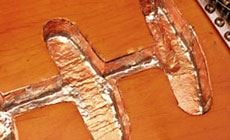

Speaking of totally shielded, the old Danelectro/Silvertone guitars were super-shielded. The covers of their classic lipstick tube pickups acted as shields, and the components inside were encased in copper.

When Nat Daniel, the inventor/founder of Danelectro, introduced these “Totally Shielded” guitars at the NAMM (Nat’l Assoc. of Music Merchants) show, he set up a large neon sign in the exhibition hall. The Dan-os sounded just fine right next to that big neon, while it had other single coils buzzing out of control!
